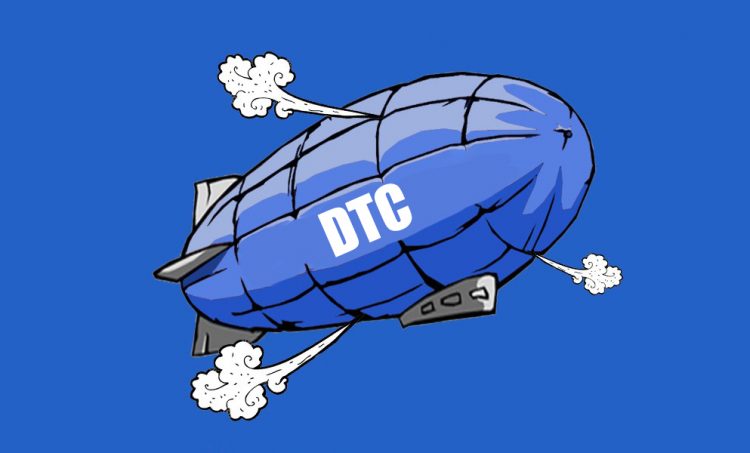The dirty secret in eCommerce, next to no one makes money online only… and the economics are getting worse with rising consumer acquisition and fulfillment costs. Most direct-to-consumer (DTC) brands do nothing new and are now becoming more reliant on traditional marketing and retail channels to grow.
Don’t Believe Us? Here’s the Proof:
Firms that have much larger advertising budgets than you and I will see in our lifetime:
Wayfair – Sales are growing but losses are mounting as each consecutive quarter the firm spends more money on digital advertising and costs more to acquire each subsequent consumer.
Casper – Yes, even in the highly profitable mattress segment Casper is losing $349 per mattress sold.
Online eTailers – Overstock.com, Digitally Native Brands Bonobos and Modcloth who’s founders got bailed out by Walmart only to have Walmart sell Modcloth for a loss.
A glut of other online only players are where the real apocalypse is coming from not brick and mortar. Brands need to closely follow what the largest online retailer is doing, Amazon. They’ve begun a program where they are working in concert with brick and mortar retailers called Counter where they are aiming to have their private label brands located inside… Get this… Stores. Not only do they want to own the customer relationship, but they want your wholesale customers now as well. Other online only players are likely to imitate the retail giant.
How Did We Get Here?
First, you had to circumvent the traditional indirect channels and forge a direct distribution model that allowed you to keep all the profits, and enabled optimum proximity and data access with the target consumers. Wholesale distributors and physical retail were dead. This is the rookie move in brand strategy as it does not factor in the costs and shift in consumer preferences or the conflict you create with your in market dealers.
Increased Competition Online: Early on, circa 2010 when there was very little competition online. These businesses did very well. However, as the barriers to entry for online have become virtually zero ($100/year) anyone can do it creating a lot of clutter. There is only so much room on a browser or the first page of Google resulting in increased costs for everyone.
New Privacy Laws: Thanks to GDPR and CCPA using data to effectively hound and target consumers online is becoming increasingly difficult. Even Google who relies very much on advertising is phasing out 3rd Party Cookie support on its Chrome browser and is in the process of disrupting itself before someone else does.
Consumers Blocking Ads: Anyone who is technically competent and has some money (i.e. who you want to reach) is tuning out advertising. In addition, screen time grew by the smallest amount over last year meaning we are reaching digital saturation.
Returns: Online only is resulting in a higher return percentage than that of brick and mortar and is causing a nightmare on margins. Consumers now expect free shipping both ways denting in most cases already thin margins.
Channel Conflict: Retailers despise vendors who compete with them directly and look to partner with those who’s values are closely aligned with their success.
Where to Next?
So if the direct-to-consumer model is not going to revolutionize, etailers you sell through are looking to cut you out and sell private label product to your wholesale customers, and corporate owned brand stores are costly and complex to operate wholesale is becoming the new black. Partnerships that span online to offline build loyalty with your best customers, help them acquire new customers and give your sales team more opportunity to interact and engage with customers at scale are increasing in importance. Being located at physical retail just so happens to also boost online sales, called the Halo Effect of Brick and Mortar.
[vc_row][vc_column align=”center” column_colour=”rgba(135,163,191,0.1)” align_sm=”left”][vc_column_text]
Sell Everywhere Your Consumers Buy
Keep reading to learn about the changing landscape of direct-to-consumer, but if you’d like an executive guide distilling the playbook as to how you can scale your online and wholesale channels together, download The Enterprise Guide to Omni-Channel Ecommerce for Brands.
Inside, you’ll get one-pagers detailing …
Comprehensive data on the opportunities and threats
Merchant spotlights for insights on combining sales channels
A checklist to consider when implementing an omni-channel program
[/vc_column_text][/vc_column][/vc_row]
Of all the many annoyances of the marketing decade that has just passed, no other trend generated more bullshit and overstatement than the concept of direct-to-consumer brands. As it turns out in a DTC model, the only party that benefits is the end consumer as so called ‘digital disrupters’ are subsidizing the product marking each subsequent buyer more expensive to acquire. The future of retail looks a lot like it’s past with the rise of brick and mortar wholesale.

